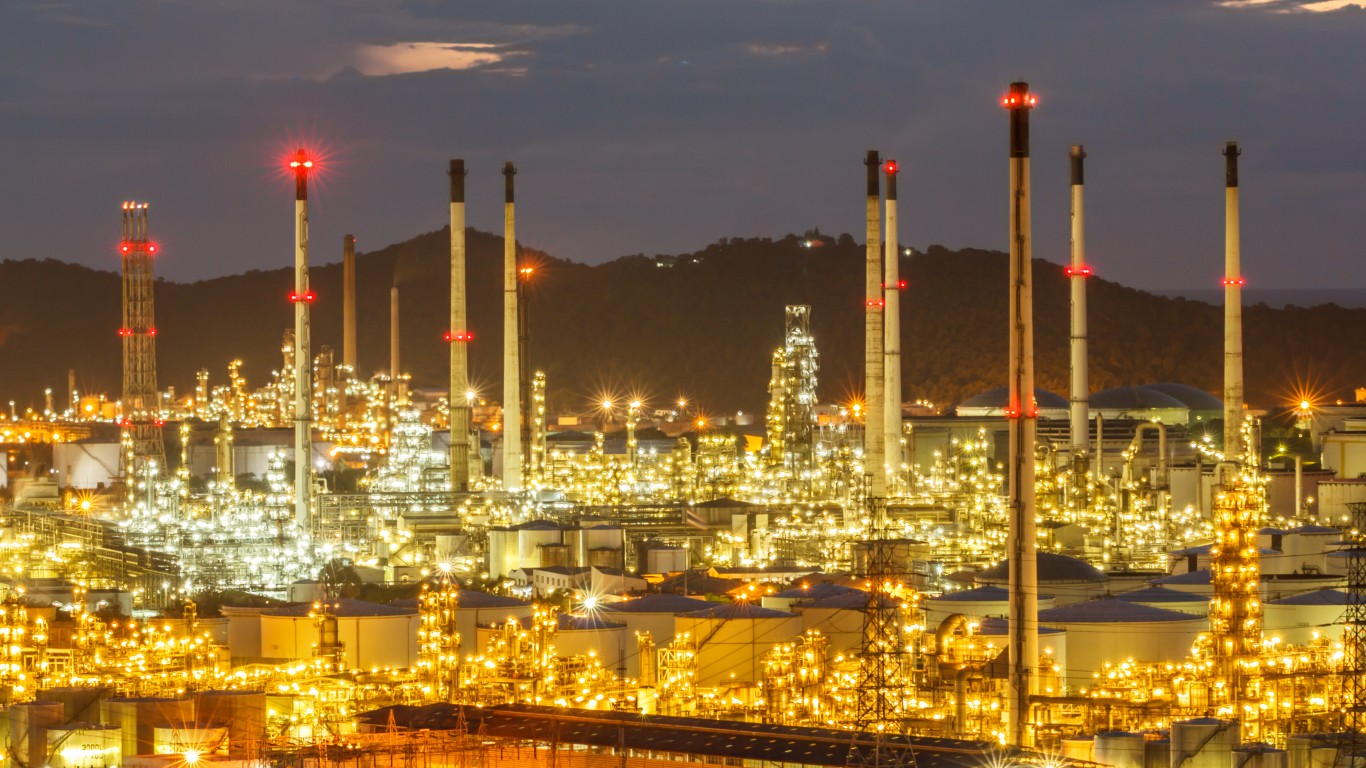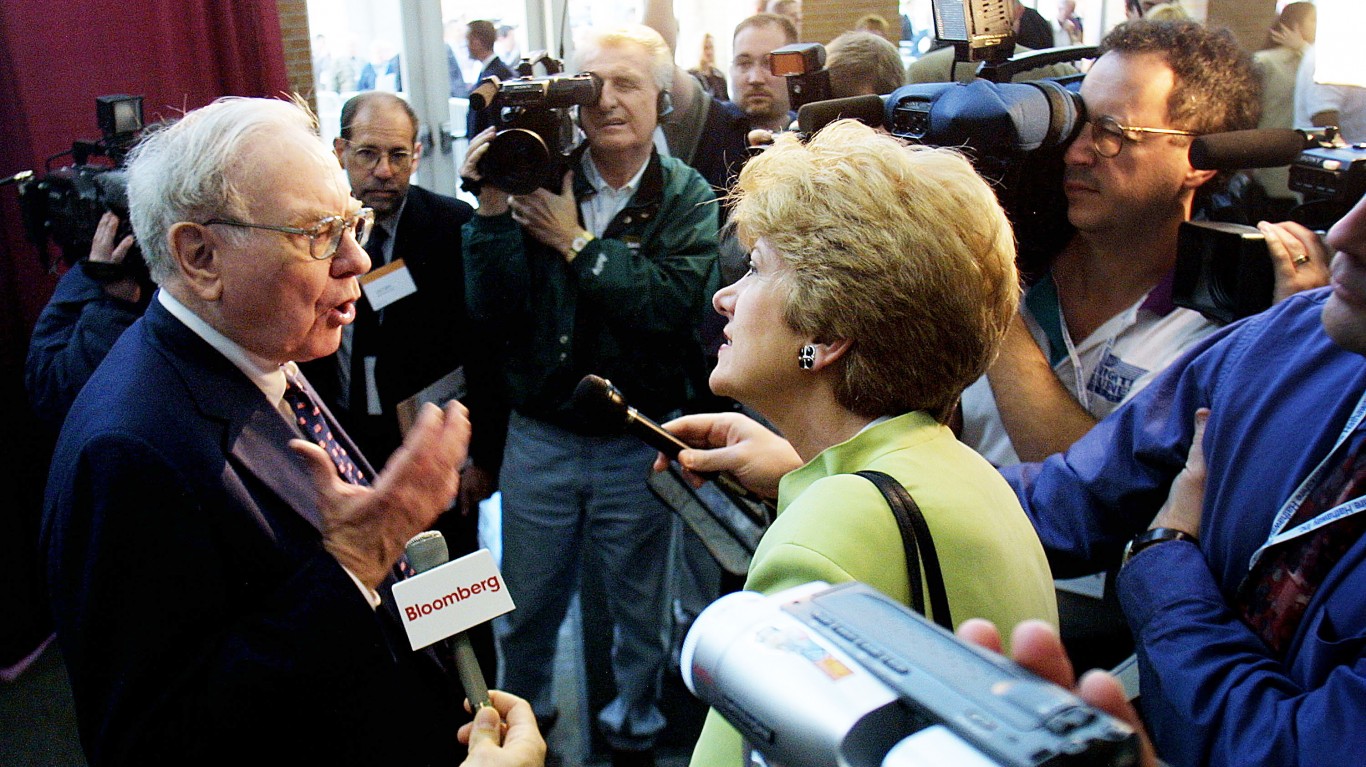
Since a recent peak of around $91 a barrel in early November, the West Texas Intermediate (WTI) crude oil price has dropped by almost 23%. The price of gasoline has increased by about $0.17 a gallon ($7.14 per 42-gallon barrel).
There are two simple explanations. First, output from producers is now a less expensive input for refiners. Second, higher oil prices are reflected more quickly in gasoline prices. Once the price shoots up, it takes a longer time for it to decline because refiners employ a last-in, first-out inventory accounting method that uses the most recently purchased crude at the top of the inventory to be refined first. That oil is cheaper today than it was three months ago, but pump prices have remained elevated. That means refining margins are high and profits are strong.
Of course, since we are talking about the oil business, it is way more complicated than that. J.P. Morgan analysts John Royall, Alejandra Magana and Ritik Kumar updated their coverage of oil refiners in a note released on March 28, and this is how they describe what is happening with refiners:
Despite fresh concerns around the demand side given fears of banking sector contagion seeping into the broader economy, refiners have held up relatively well given the circumstances … driven by resilient spot cracks, particularly when compared to absolute crude oil prices (EC 321 up 17% since March 3rd, Brent down 10%). … Relative crack strength has been driven by gasoline, unlike 2022’s diesel story, with demand creeping back towards 2019 pre-COVID levels and the switch to summer grade [gasoline] now underway.
EC 321, in this case, refers to what is called the crack spread for East Coast crude. The number refers to the refining (cracking) of three barrels of crude into two barrels of gasoline and one barrel of distillate.
J.P. Morgan’s analysts note that refining output is likely to go up as refiners boost output by as much as 550,000 barrels a day due to refinery expansion projects and restarts. They conclude:
All in, we see a more balanced picture on refining vs. our more bullish views from early January, but with the recent trade-off in shares, upside to our price targets remains >20%, on average, for our group (based on mid-cycle 2024 FCF). We do recognize the growing risk to the macro demand backdrop and note that VLO, the only one of the large cap refiners that was a stand-alone public company during the last recession, traded down ~60% peak-to-trough in the severe downturn of late 2008.
Here are how eight refiners stack up to J.P. Morgan’s new model.
Valero Energy Corp. (NYSE: VLO) remains Overweight with a price target of $172. That is above an average price target of $159.42 from 21 analysts. The stock’s 52-week trading range is $93.65 to $150.39, and shares have added more than 40% over the past 12 months.
Phillips 66 (NYSE: PSX) also remains Overweight. J.P. Morgan’s price target is $120, below the average of $126.29 from 19 analysts. The stock’s 52-week range is $74.02 to $113.53, and shares have soared more than 63% in the past year.
PBF Energy Inc. (NYSE: PBF) is the third refiner to get an Overweight rating from the analyst. With a price target of $59, J.P. Morgan’s estimate is about 10.5% higher than the average from 14 analysts. The stock’s 52-week range is $20.83 to $49.00, and shares have soared by about 96% in the past 12 months.
Par Pacific Holdings Inc. (NYSE: PARR) was one of two refiners with a Neutral rating from J.P. Morgan. The price target on the shares is $34, about $1.10 above the average from seven analysts. Par Pacific’s share price has more than doubled over the past year, and the 52-week range is $11.99 to $29.90. The high was posted on March 28.
HF Sinclair Corp. (NYSE: DINO) was the second refiner with a Neutral rating from J.P. Morgan’s analysts before Tuesday’s report. Their price target on the stock is $58, more than $4 a share lower than the average of 17 analysts. Sinclair’s share price has risen by 25% in the past year, but the shares have lost about 8.5% in the past six months. The stock’s 52-week range is $34.90 to $66.19.
Marathon Petroleum Corp. (NYSE: MPC), which was downgraded from Overweight to Neutral by J.P. Morgan’s analysts on Tuesday, is the only one of these eight stocks to get a rating change. They also raised their price target on the stock from $137 to $149. The key reason for the downgrade is J.P. Morgan’s belief that expectations of a $10 billion share buyback for this year have already been priced in. The stock’s 52-week range is $77.62 to $136.46, and shares have added about 63% in the past year. On March 29, analysts at Goldman Sachs upgraded Marathon from Neutral to Buy and set a price target on the stock of $150.
Delek US Holdings Inc. (NYSE: DK) is another refiner with an Underweight rating. J.P. Morgan’s analysts have a $26 price target on the shares, $4 below the average of 17 analysts. The stock’s 52-week range is $19.26 to $35.45, and the shares have gained more than 12% over the past 12 months. As was the case with Marathon, dividends and buybacks have already been priced into the share price, wrote the analysts.
CVR Energy Inc. (NYSE: CVI) also has an Underweight rating from J.P. Morgan’s analysts. Their price target of $31 is $2 below the average of seven analysts because the analysts believe that CVR’s valuation is the “fullest” in the group after rising by more than 31% over the past year. The stock’s 52-week range is $23.16 to $43.61.
Are You Ahead, or Behind on Retirement?
If you’re one of the over 4 Million Americans set to retire this year, you may want to pay attention. Many people have worked their whole lives preparing to retire without ever knowing the answer to the most important question: am I ahead, or behind on my goals?
Don’t make the same mistake. It’s an easy question to answer. A quick conversation with a financial advisor can help you unpack your savings, spending, and goals for your money. With Zoe Financial’s free matching tool, you can connect with trusted financial advisors in minutes.
Why wait? Click here to get started today!
Thank you for reading! Have some feedback for us?
Contact the 24/7 Wall St. editorial team.





